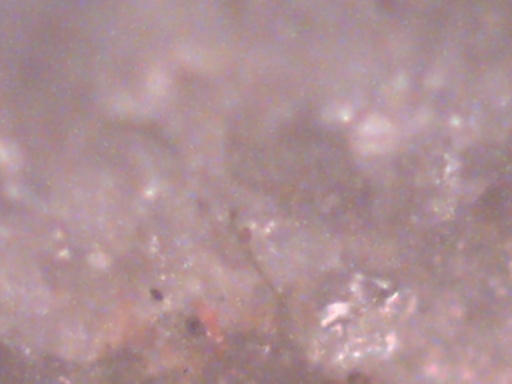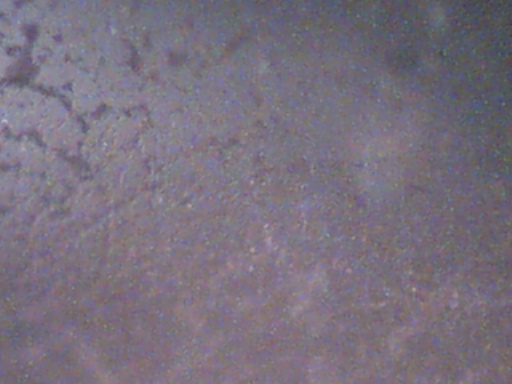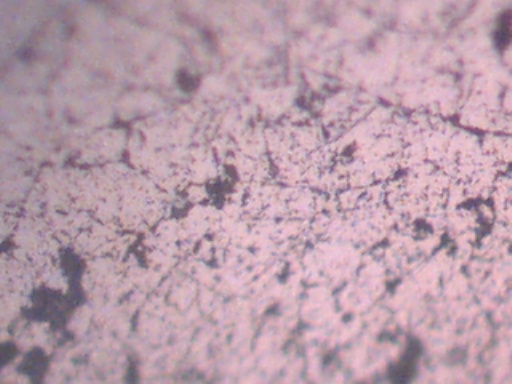|
of Clay, Sand & Gravel
All over the earth are deep beds of clay, sand and gravel. They are conspicuously present on most of the surface of the earth. I have found deep beds at the top of the Rocky Mountain ranges and in valleys on islands in the Caribbean. Gravel is everywhere.
The traditional geologic theory states that they are the remains of earlier mountains that have since worn away and all that is left is the quartz sand and gravel. The gravel is rounded in shape because it has been worn in streams, tumbled along for eons. The only problem is that natural gravel and tumbled gravel have very different surfaces. Gravel, in my opinion, proves that there was one heck of a catastrophic event in the Historically recent past. If you look at the surface of gravel you'll find the most amazing details. Microscopic inspection of natural gravel reveals that the surfaces are not abraded like tumbled gravel. Natural gravel has a variety of features, textures, and finishes. I have even found shrink wrinkled finishes like those found on old avionics. Some have areas of small globules that have mirror finishes. These types of finishes are very different from beach and stream worked tumbled gravel. Look at the pictures on the right and you can plainly see that tumbled gravel has a spherical wear plane over the surface with plucks that are gouged into the surface. Natural grovel on the other hand have surfaces that do not show a spherical wear plane. They have textured surfaces. Some have crystalline surfaces and sharp intersections of crystal planes. Others have shinny blisters on the surface. These are not rare features of gravel, these are the norm. Any gravel that has not been stream or beach tumbled has these features. I would estimate that 95% of all the gravel on the face of the earth has never been tumbled.
The Bible discusses the formation of these materials during the flood of Noah as the opening of the fountains of the deep. The only source for molten quartz in great volumes is deep within the earth. During the cataclysm known as the flood of Noah, there were gigantic fissures that formed in the crust. The Earth's surface crust cracked through to the molten stratified layers of elements 35 to 40 miles deep in the earth. Most of these layers contain liquid silicon dioxide, otherwise known as quartz. During the catastrophe these cracks opened and closed repeatedly allowing molten material to force its way to the surface if the earth. There are many different types of sands and gravel. Each type is formed by a specific set of conditions. There were a wide variety of mixes of material arriving at the surface at different rates encountering different conditions. This explains all the different types of clay, sand and gravel we find all over the surface of the earth. Some materials rose to the surface as very thin mists and were sprayed into space and forming fine clays of specific materials. Some mixes were thicker and formed droplets of quartz that came upward into a sea, or fell into a sea and temper-shattered into the coarse angular quartz sands. Others formed large globules of gravel of different sizes depending on the surface temperature and gaseous thrust of the material. The gravity condition at the time of the expulsion also played a great role. There are almost perfect gigantic spherical granite boulders 10 feet in circumference that have been found in Mexico. The process of propelling the material upward was simple. As the crack opens at the bottom molten material is drawn into the crack. See the page the data on crustal flexing. When this section of crust rotates again around the tighter arc the material is forced upward and out the top. This pumps the molten material upward higher up the crevasse where it is forced upward and out as the crevasse slams back shut. This is material that has been at extremely high temperatures and pressures, suddenly arriving at the surface from the depths. This rapid decompression causes the material to explode upward as the pressure is released spraying the molten materials into the air. The event is described in the Bible as the opening of the fountains of the deep. This is the process that formed all the sands and clays that are intermixed in the layers of the deposited sedimentary crust. Certain conditions would have material arrive at the surface as a gaseous vapor. In these cases the materials condensed into clays and sands. The larger vapor droplets formed larger grained material. These sometimes were shattered into coarse angular grained sands by contact with water and rapid cooling. The larger droplets and globules formed the gravel that is littered over the earth in deep beds, as deep as 10 to 15 feet.
The right conditions at certain times formed very large rounded globules of magnesium or granite gravel. Gravel, sand and clay all come in a variety of mixes and sizes and the conditions that existed at the location determined the amount and the type of deposition. Some deposits were vast like the sands that washed down the Rio Grande creating the beaches that run for hundreds of miles. There were other sands like white sands in New Mexico or the Big Bear dunes in Michigan where the specific sand is only in a small area. The molten material is sent aloft by the crustal pumping action and the expansion of relieved pressure. During the apex of the event it stayed airborne for extended periods, enough time to harden into smooth globes. Some gravel fell to earth and then was pummeled by other gravel fracturing the brittle surface but the parts held together because the inside was still soft and pliable. Other gravel impacted gravel and these impact depressions can be found in the gravel today. I have samples of gravel that is formed of two globes connected by an elongated link, like a dog bone, this was a rotating set that never pulled apart into two pieces.
|
 Natural Gravel has shinny mirror finish bubbles and indention's.
Tumbled gravel has a scarred surface plane with plucked areas BELOW the plane. Natural Gravel with a variable surface and mirror finished protrusions where hot molten material bubbled out from tiny fissures in the hardened surface of the shrinking blob of quartz.
Notice there is a spherical plane with plucked areas in this tumbled gravel.
Gigantic Granite Gravel from Mexico
This rare gravel shows that although the outside was brittle and fractured the piece stayed together because the interior was still hot and pliable.
These pieces of gravel impacted shells on the surface which left their imprints. It is just not feasible that streams would fashion this into rounded gravel leaving the shell imprint inside. Besides these gravel are almost pure silicon dioxide, a material with an extremely high melting temperature.
|


